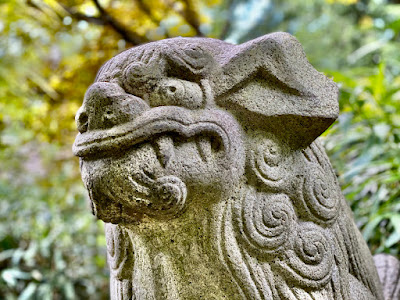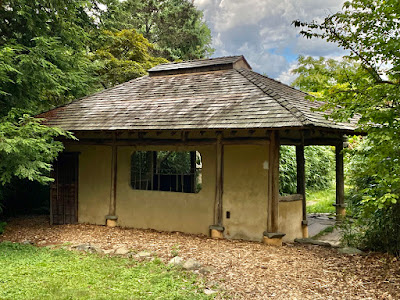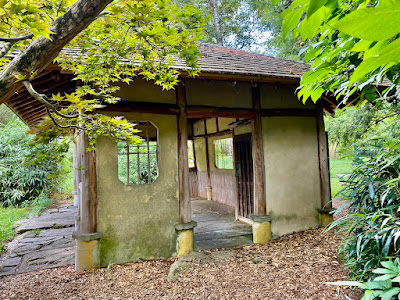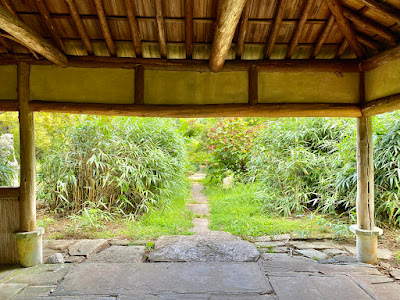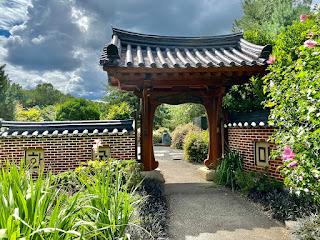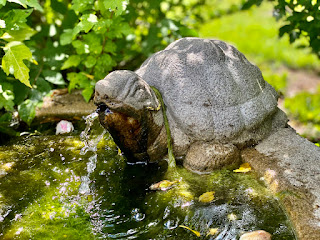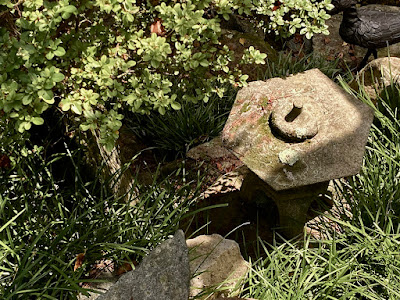Hillwoood is the former estate of Marjorie Merriweather Post in Washington DC, and contains a Japanese-style garden unlike most.
Describing the Japanese-style garden at Hillwood is no easy task. It is considered a "non-traditional" Japanese garden and offers "action and intrigue" instead of "opportunities for contemplative meditation," at least according to the Hillwood Estate website.
Its safe to say that the garden reflects a more "orientalist" view of a Japanese garden built during the late 19th to early 20th century. In fact, the original garden was built in the 1920s. Today Hillwood defines it as "an artful hybrid of Japanese and American gardening traditions."
In 1958, Marjorie Post had the old "oriental garden" replaced with a new garden designed by Shogo Myaida.
Visiting the garden offers some challenges. The winding pathway drops down considerably because the garden is located on a very steep hill, an insurance hazard for Hillwood to be sure. I had some difficulty traversing the steps and pathways in a manner that was safe. Photographing it successfully from above was also difficult. One has to watch their step with every move.

I found that entering from the bottom and working one's way to the top was a much more pleasant experience.
After passing through a formal gate, one encounters a tiered pagoda and a series of ponds and bridges.
 |
| Translation: Hillwood Garden |
Part of the problem with this garden is that there is simply too many hardscape items packed into a small and steep environment. Apparently, Marjorie Post saw this as a collection of artifacts that reflected her tastes and interests.
The garden was remarkably well maintained given the challenges of its age and topography.
Design wise, it was too "kitschy" and repetitive. Too many bridges, stepping stones, lanterns, and statues. I can only assume that Marjorie Post thought this is what a Japanese garden looked like (for the record, authentic Japanese gardens do not).
On the other hand, it is a good example of a historic example of late 19th early 20th century Japanese garden ideas seen elsewhere in North America. Shame, given that the garden was reinvented in post-world War II 1958. A lost opportunity to get it right.

